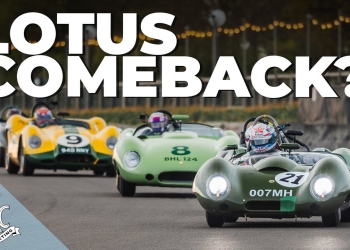Revisiting the Golden Age: The 2024 Glover Trophy at Goodwood Revival
There's something magical about the whine of a 1.5-litre Formula 1 engine echoing through the crisp autumn air at Goodwood. The Glover Trophy, a highlight of the Revival weekend, never fails to transport us back to a pivotal era in motorsport history. As I settled into my usual spot in the press box, notepad in hand and a steaming cup of tea at the ready, I couldn't help but feel a tingle of excitement. This wasn't just another historic race; it was a living, breathing tribute to the lightweight era of Formula 1.The Lightweight Era: A Brief History
For those who might not be as steeped in F1 lore, let me paint you a picture. From 1961 to 1966, Grand Prix racing underwent a dramatic transformation. The governing body, in their infinite wisdom (and that's said with a healthy dose of sarcasm), decided to limit engine capacity to 1.5 litres. This rule change sparked a revolution in car design. Teams were forced to think outside the box, creating machines that were lighter and more agile than their predecessors. It was an era of innovation, where clever engineering often trumped raw power.The Stars of the Show
As the cars lined up on the grid for the 2024 Glover Trophy, it was like stepping into a time machine. There, gleaming in the weak English sunshine, were some of the most iconic machines of the 1960s: • The Ferrari 1512: A work of art with its screaming V12 engine • Lotus 25: Jim Clark's championship-winning chariot • BRM P261: A British bulldog with a bark to match its bite Seeing these cars in the flesh, it's hard not to get a bit misty-eyed. They're more than just metal and rubber; they're rolling history.The Battle Unfolds
When the flag dropped, it was like someone had uncorked a bottle of vintage champagne. The cars surged forward, a cacophony of engine notes filling the air. The Ferrari 1512, with its distinctive red livery, took an early lead. Its V12 engine, a masterpiece of Italian engineering, sang a siren song that had spectators and drivers alike under its spell. But hot on its heels was the Lotus 25, looking every bit as nimble as it did when Jim Clark piloted it to championship glory.Click here to preview your posts with PRO themes ››
As the laps ticked by, it became clear we were witnessing something special. The Ferrari and the Lotus were locked in a dance as old as time itself – the unstoppable force meeting the immovable object."It's like watching Ali and Frazier all over again," muttered the veteran journalist next to me. I couldn't have put it better myself.
Technical Brilliance on Display
What struck me most about this battle was the stark contrast in design philosophies. The Ferrari, with its powerful V12, relied on brute force to muscle its way around the circuit. The Lotus, on the other hand, was all about finesse. Its monocoque chassis, a revolutionary concept at the time, allowed for a lower, more aerodynamic profile. In the hands of a skilled driver, it could carry speed through corners in a way that defied belief. For the tech-heads out there (and I count myself among you), here's a quick breakdown of what made these cars so special: Ferrari 1512: • Engine: 1.5-litre V12 • Power: Approximately 220 bhp • Weight: Around 450 kg Lotus 25: • Engine: 1.5-litre Coventry Climax V8 • Power: Approximately 190 bhp • Weight: Around 450 kg Now, I know those power figures might seem laughable by today's standards. But remember, these cars weighed about as much as a large motorcycle. The power-to-weight ratio was phenomenal, making for some truly hair-raising racing.The Human Element
As thrilling as the technology is, it's the human stories that really make events like the Glover Trophy special. Watching the drivers wrestle these machines around Goodwood's challenging layout, I couldn't help but think of the legends who originally piloted them. Jim Clark, John Surtees, Graham Hill – these weren't just drivers, they were gladiators. They raced in an era when safety was an afterthought, relying on skill, bravery, and more than a little luck to see them through.Click here to preview your posts with PRO themes ››









